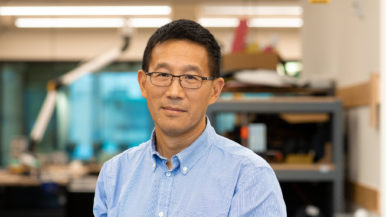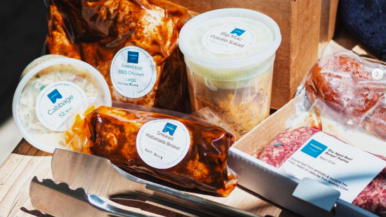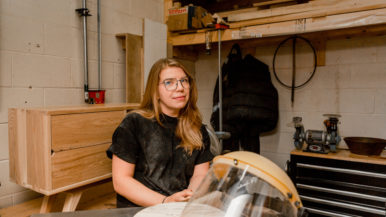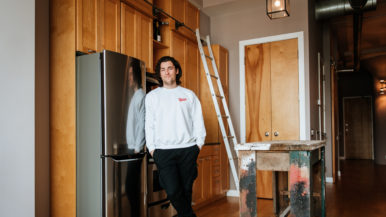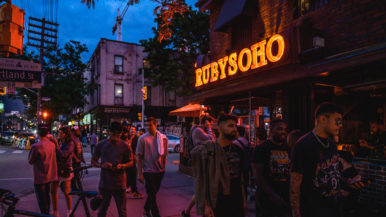“Social distancing is hard for us because our mission is to reduce social distance”: A Q&A with Nick Saul, CEO of Community Food Centres

While grocery stores are being emptied of their shelves, people living paycheque to paycheque will likely find themselves unable to access food in the coming weeks. Community Food Centres Canada serves healthy, nutritious meals at 13 community centres and 185 affiliated “Good Food Organizations” across Canada. We spoke to CEO Nick Saul about how the coronavirus has affected their ability to operate so far and why social distancing was a thing long before Covid-19 happened.
Your organization works on the front lines providing food to homeless people and other vulnerable populations. How are you coping with the crisis at hand?
These are difficult, stressful and unnerving times. The idea of social distancing is super-hard for us because we usually operate by reducing social distance: our community food centres focus on group dining where people can meet their neighbours and feel less isolated. We bring together 80 to 250 people for a nutritious table-service meal in a dining hall. Many of them are low-income, stressed, isolated and coping with a whole range of physical and mental health issues. By virtue of being part of a community, they build a sense of hope and self-worth and move their lives in a different direction.
What measures have you had to put in place to deal with the threat of coronavirus?
Our centres have switched to takeout. Emergency food hampers, which staff deliver to people with limited mobility, now include as much as six weeks’ worth of food. We’re also exploring the idea of distributing grocery gift cards to community members so they can buy the food they need to get by. I’ve been picking up on a sentiment of how important it is to stick together during these times, but that’s based on the assumption society was sticking together before this crisis hit. We weren’t. Pre-Covid, there was massive social distance in terms of people with means and people without. There were those who were unable to participate in society because they didn’t have the income to do so. All of these things are being exacerbated by the current crisis.
How so?
Take a concept like self-isolation: well, that’s much harder if you’re living in a crappy, mould-infested basement apartment or you’re a family of four crammed into a small apartment. Someone working a low-wage job may not be feeling very well, but they still have to show up for work to keep a roof over their head. People are hoarding food, but there’s no way that food-insecure people—that’s one in eight Canadians—can stock up. When I see people buying more than they should, that’s the antithesis of sticking together. Not only does it cause fear and panic, it means a lot of people can’t access something they deserve to have access to.
Speaking of empty grocery stores, has this affected your organization’s ability to provide food to vulnerable populations?
We buy our food from a variety of sources, but we also work directly with farmers. In Toronto we have a longtime relationship with the New Farm, a family-run organic farm near Creemore, for example, and the Hamilton CFC has a good relationship with Pfenning Farms. For groups like ours, the main issue isn’t accessing food, but accessing the resources and money to ensure that we can purchase food and serve it to the people who need it the most.
Many people have lost income during this crisis, which means that more people may need to rely on your services. Is there a plan in place to prepare for this?
We just launched a $3-million fund to help our 200 partner organizations weather the coming months and pay for food, support operations and expansion. At least one centre proposed that if they had more funding to bring on a few more staff, they could create cells of staff so that if one person fell sick, that cell could self-isolate while other staff continued to offer services. Our centres located in Indigenous communities will be sending out more hunters, trappers and fishermen to procure food.
What do you think will be the long-term impact of the next few months?
I think a lot about isolation and loneliness. These things disproportionately affect low-income communities, and they’ll only be magnified during this period. Again, what can we do? It’s not obvious when the modus operandi is to distance yourself from people and stay inside. That’s what we’re working on right now. Can you create virtual communities? Even if you have access to technology, it’s not the same. Mental health services are crucial resources during this period. We have no clue how long this is going to last. It’s a very tricky time that is shifting by the hour.
What can people can do to make sure others are taken care of? Have you witnessed any extraordinary measures so far?
I’ve seen a lot of kindness and generosity out there. People shopping and cooking for and checking in on their neighbours by porch or phone. Our Good Food Access Fund has already received some incredible gifts. Our remarkable staff and volunteers show up each and every day to ease the stress and make things better for their low-income communities. And our Indigenous CFC in Turnor Lake/Birch Narrows in Northern Saskatchewan, which is already struggling to gather food for its community, has reached out to two small neighbouring Indigenous communities that have no running water and little resources to share what food they have. There can be no better example of sticking together than this.
And how do you manage to relax during quarantine?
Early-morning runs through High Park help me get through the day. That’s when I think about the future. It’s a future that will need to prioritize people and social solidarity over profit and the commodification of everything. My greatest hope is that this frightening and uncertain time will allow us all to reflect on the world we want and what we need to do together to create it.
This interview has been edited for length and clarity.

